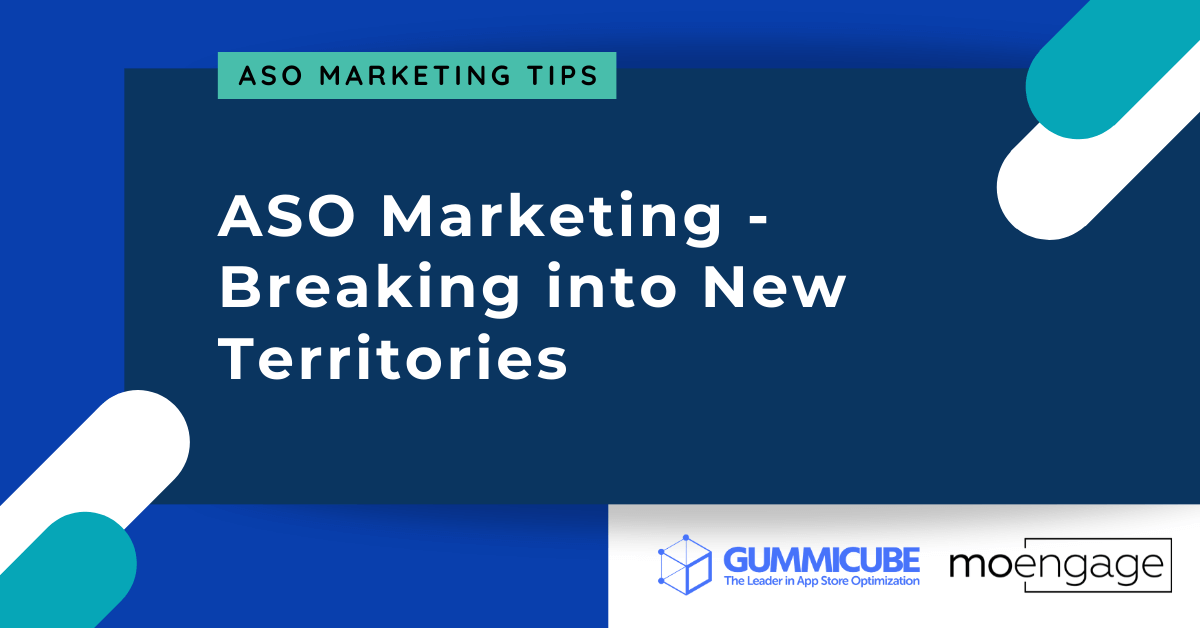ASO Marketing – Expanding Your App Into New Territories

Reading Time: 5 minutes
|
It’s time to expand your app into new territories. There’s a wide world of users out there waiting for an app like yours, all you need to do is make it available overseas, right?
Well, it’s not that easy. ASO Marketing requires different approaches and research for new countries, so what helped your app reach the top of the search results in one region may leave it unnoticed in another.
How can you help your app succeed in other territories? Let’s explore what you should do when bringing your app to new regions.
| Bonus Content
👉 Beginner’s Guide to Omnichannel Marketing for 2021 [Download Ebook] 👉 Customer Lifecycle Marketing Campaigns: An In-depth Guide [Download Ebook] 👉 Definitive Buyer’s Guide To Customer Engagement Platform [Download Ebook] |
#1. Determine Where to Expand
The first step to launching in new territories is choosing where you want to go. When you expand to a new territory, you want to make sure it’s worth the investment. Are you launching into a region where users are slow to monetize? Is there a demand for your particular app in this territory?
These questions are key to ask, as launching haphazardly can result in spending time and money with little to no return. Be selective with where you expand.
Is There Demand?
Before you begin preparing your app to launch in another region, you need to research. Check the keyword volume behind the terms related to your app and see if there’s demand. If users in the region aren’t searching for apps like yours, it won’t succeed.
You need to expand into regions with high demand and search traffic. This creates greater visibility to potential users, which in turn creates better traction and puts you in a better position for success. Selling where there’s no demand is simply a waste of resources.
#2. Localization
When you launch an app in a new region, you need to localize. This does not mean simply translating an app, but also adjusting for various cultural aspects. An app without localization will be seen by users as a stranger in a strange land.
a) Localizing in Different Languages
It’s easy to get lost in translation if you localize haphazardly. There are a few important things to consider when localizing in a new language:
– Do the translated keywords carry the same context?
– Is the text in the metadata and screenshot copy grammatically accurate?
– Did the translations include any slang or terminology that does not have an equivalent in the new language?
Understanding these will help your app stand out more in the new territory. Otherwise, the localized version may come across as unprofessional or poorly designed.

b) Localizing in the Same Language
Even launching in a territory with the same language will require localization. This goes beyond just changing “personalize” to “personalise” – local terminologies must be taken into account.
In the US, users search for “apartment rentals.” In the UK, a user with the same needs will search for a “flat.” Developers that fail to adjust their app listings for the territories will miss out on users simply by not knowing what terms to target.

The word coloring is customized based on US vs UK English.
c) Conversion Trends
Most preferences are not universal, especially when it comes to app designs. If you try to use the same designs for your creative sets across all regions, you may be disappointed by the results.
Instead, research conversion trends and see how they differ. Perhaps users in one region prefer a different color scheme or specific features are valued differently. Until you research, you will never know.

If you research what your audience likes, your app listing will appear more familiar to potential users and help your overall conversion rate. If you don’t, your app will be passed up for the competitors that did their due diligence.
Take a look at ASO Marketing Strategy: Creating a Stronger Organic Top of Funnel
#3. Paid Marketing
Success never comes instantly. When you launch in a new territory, you will have little to no traffic at first. Any past successes don’t guarantee growth in another region, so you may want to use paid marketing to make up for the difference.

Boost Indexation
How do you help your indexation when starting off anew? Running paid marketing campaigns can help feed traffic to your store listing and increase its keyword rankings.
When your app appears as an ad in searches, any clicks it gains will count towards its keyword indexation. The clicks and improved visibility help your app grow at a faster rate. For example, Apple Search Ads can potentially provide an organic uplift of 1.8-2.2 times the volume-driven in from the paid campaigns.
With paid marketing, you can begin accelerating your growth early on. Without it, you’ll be trying to catch up with competitors that are using their own paid strategies.
Conclusion
When you want to expand your app to new territories, you need to do it right. You must understand what territories to target, localize your app for each new region and use paid marketing to catch up to the competition.
Adaptation is key. If your App Store Optimization does not adapt to the new region, it will be at a disadvantage and ignored by users.
Here’s What You Can Read Next
|













